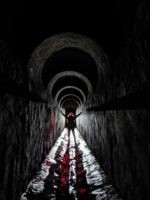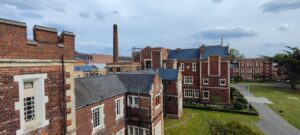Abandoned Sussex: Cocking Lime Works | Urbex

History
The now abandoned Cocking Lime Works is located in the West Sussex countryside. It is part of the 16,500 acre Cowdray Estate which is privately owned by the Cowdray family. The earliest mention of the lime workings in Cocking dates back to 1715, when 2 kilns were in use. In 1833, William Marshall was killed by an earthquake in the chalk pit. According to the 1861 census, James Bennett, a tramp, was sleeping in a lime kiln in Cocking. Explosives were first used in the chalk quarry in the 1940s. Neighbours complained as the work was often carried out on Sundays. The explosions caused cracked ceilings and shattered windows! The works have changed hands numerous times and were leased to many companies. The last was the Dudman Group who operated on the site from 1993 until 1999 when the site was abandoned.
See more Abandoned Places in Sussex
Exploration
This exploration is fun in the sense it has multiple layers that can be climbed up and around on. Entering the site was probably the easiest of the day, with the main resistance to holding people out was a couple of ‘Keep Out!’ signs. There was even a gap in the fencing from the main road!
Despite being closed in 1999, nature has wasted absolutely no time in reclaiming the site, with trees and brushes growing through the machinery like they’re not even there.
Features
Old vehicles and machinery lie scattered around and it’s not difficult to see how the limeworks would’ve operated. A little imagination can easily show how this place would’ve looked back when it was operational. Although an interesting example of how nature can quickly reclaim whatever we as a species can build, the site can be dangerous, stairs and metal floors are rusted to the point where you aren’t sure if you should step on them, especially near the kilns.
At the centre of the works are 8 lime kilns which are 3 metres in diameter. The centre six are identical and all 3 metres in diameter.. The west kiln is rectangular and so stands out against the others. The most recent one was built in 1958 but is more in keeping with the original six. These kilns loom over the rest of the site and are intriguing to climb around. They give you a dizzying feeling to walk up to and look down.
Sixteen metres above the base of the kilns is the primary chalk crusher. It was accessible to lorries which brought chalk from the chalk pit via a direct purpose-built road in 1962. The crusher was electrically driven and the chalk was crushed using rotating teeth. The chalk then travelled along the conveyor belt into the intermediate chalk crusher. Looking at the conveyor belt you can really understand the power once held in this machinery.
Today
The site closed in 1999, however chalk is still occasionally extracted from the pit for local use. The chalk pit is currently used for pheasant shooting. In 2011, Cowdray Estate applied for the chalk pit to be used as landfill, but this was rejected. Then in 2012 they announced plans to use the limework site as camping facilities for visitors to the South Downs. This hasn’t happened yet and doesn’t look like it will anytime soon.
Last Updated on 24 October 2021 by Michael













